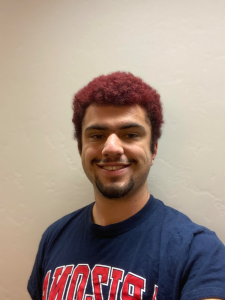University of Arizona students all share something in common; meal plans. Meal plans have been essential for students, but a noticeable change has been made. A price change was observed by many students, and upon noticing the way the meal plans function has shifted, as their value has decreased in a rather significant way. Due to this, there have been concerns about meal plans and their pricing.
Swipe meal plans have a rather valuable function, “swipes.” These are worth a base $10 in value. There is no change or cash-back associated with them, and you have a limited number per day and month. This function is the main value of swipe meal plans, and due to the pricing changes, you have to use more swipes, use your dining dollars or even your limited and valuable “cat cash.” Debit meal plans are similar to swipe meal plans, but they don’t have the swipe function.
Meal plans are also mandatory for students living in the Honors Village.
Upperclassmen have taken notice of these price changes or the changes have gone under the radar due to a lack of eating on campus. While freshmen, who rightfully are unaware of previous pricing, share concerns with the pricing of food items, especially if the prices rise again the following year.
Kiko Rabago, a junior, is someone who no longer has a meal plan and rarely eats on campus. Due to this, he hasn’t realized the difference in pricing. However, in the previous school year, this would’ve been different.
“I had a meal plan last year and ate on campus. If this price change happened last year or if I still had a meal plan, I definitely would have noticed,” Rabago said.
Brooklyn Krawczak is someone who is highly passionate about the meal plan prices and the food quality. She is an active advocate for students to use the student pantry instead of buying overpriced and lesser quality produce from the markets.
“It was just a known thing around campus my freshman year, the produce is bad here and it’s overpriced,” Krawczak said.
She claims the vegetables and fruit are fresher at the student pantry, and due to a clever “point based” system you can get these items for free.
“It’s too much money for the quality of food we’re getting,” Krawczak said.
She also mentioned the quality of the food is comparable to McDonalds, as chicken nuggets are often served at the market breakfast buffets in the Highland District and the Student Union Memorial Center. Now as a sophomore student, Krawczak hasn’t noticed the price change due to no longer buying food on campus often enough, though another reason behind this, besides the on campus pricing and quality of the food, she believes she is saving thousands of dollars by not having a meal plan and simply buying groceries off campus.
As mentioned before, freshman students have their concerns about the meal plan price changes as well, and have had some of their own challenges. Braiden Dillon has found that meal plans are a little difficult to work around.
“I feel like I need more swipes and I feel like I run out of swipes too fast. I don’t know, it might be me.”
Dillon has a meal plan that should permit him to eat comfortably and not need to worry so much about how much he’s spending. The on campus restaurants he frequently eats at are Chick-fil-A and Einstein Bros. Bagels, and due to him being a freshman, he is unaware of the price changes at those restaurants.
When asked if a similar price change were to be made at the end of this school year, Dillon said, “That would probably screw me over. I’d lose a lot of value in my meal plan if that happened.”
Another challenge that many of us have faced on and off campus is understanding food quality. Though, once we do understand it, our viewpoints can change about what we are eating. Drew Loy is also a freshman, and doesn’t believe that the price of the food is worth it due to the quality of the food. However, it’s convenient for him, as many students would probably agree, that having a meal plan entices you to eat on campus.
Loy also believes that simply based on price, eating off campus doesn’t have a significant price difference than eating on campus. Due to this, when being asked if a similar price change were to be made to the food on campus next year, he believes that the meal plans would be “not worth it.”
Based on these interviews, there seems to be a strong agreement that the pricing of food is too high considering the low quality of the food being served here. Meal plans at the UA are thousands of dollars, ranging from about $2,100 – $6,600. Depending on the kind of meal plan you purchase will also determine how many swipes you get, if any, how many dining dollars and cat cash you get, as well as how many guest swipes you get. Guest swipes for the majority of students are practically useless as well, as there is no way to apply them when purchasing food normally, and there are specific rules to them being applied in the first place.
Ultimately, meal plans are overpriced, as well as the food for what it is. The tens of thousands of dollars students spend on education alone is already enough. It’s time that students are able to feel stress free about what they eat and how much they spend. There is already too much on their plates already.
Follow the Daily Wildcat on Instagram and Twitter (X)










